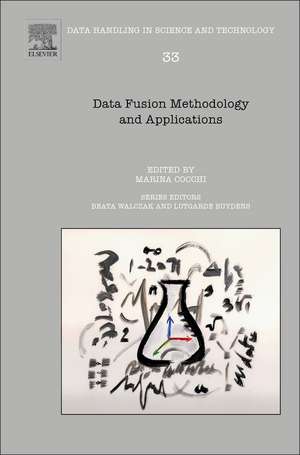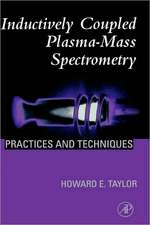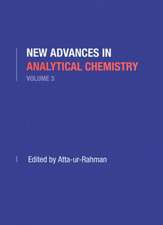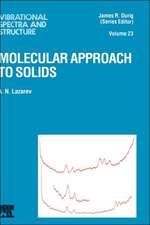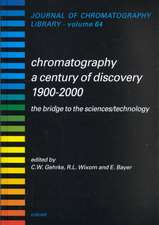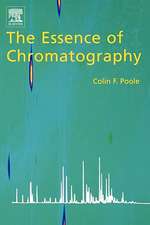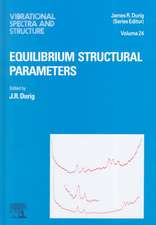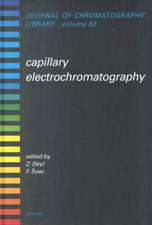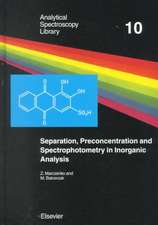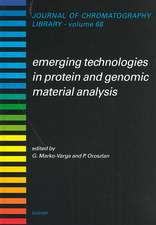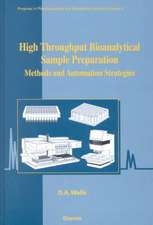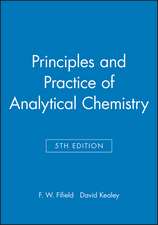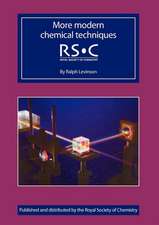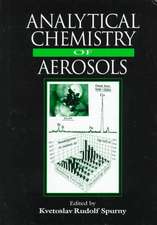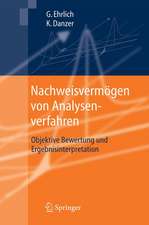Data Fusion Methodology and Applications: Data Handling in Science and Technology, cartea 31
Editat de Marina Cocchien Limba Engleză Paperback – 14 mai 2019
- Presents the first comprehensive textbook on data fusion, focusing on all aspects of data-driven discovery
- Includes comprehensible, theoretical chapters written for large and diverse audiences
- Provides a wealth of selected application to the topics included
Din seria Data Handling in Science and Technology
- 23%
 Preț: 1053.94 lei
Preț: 1053.94 lei - 27%
 Preț: 1765.52 lei
Preț: 1765.52 lei - 27%
 Preț: 1757.66 lei
Preț: 1757.66 lei - 27%
 Preț: 1371.81 lei
Preț: 1371.81 lei - 27%
 Preț: 1762.70 lei
Preț: 1762.70 lei - 27%
 Preț: 1277.61 lei
Preț: 1277.61 lei - 27%
 Preț: 1501.83 lei
Preț: 1501.83 lei - 20%
 Preț: 1648.82 lei
Preț: 1648.82 lei - 27%
 Preț: 1028.03 lei
Preț: 1028.03 lei - 24%
 Preț: 923.37 lei
Preț: 923.37 lei - 28%
 Preț: 808.91 lei
Preț: 808.91 lei - 20%
 Preț: 759.90 lei
Preț: 759.90 lei - 37%
 Preț: 761.10 lei
Preț: 761.10 lei - 28%
 Preț: 1023.88 lei
Preț: 1023.88 lei -

Preț: 1013.94 lei
Preț vechi: 1424.63 lei
-29% Nou
Puncte Express: 1521
Preț estimativ în valută:
194.01€ • 202.57$ • 160.57£
194.01€ • 202.57$ • 160.57£
Carte tipărită la comandă
Livrare economică 29 martie-12 aprilie
Preluare comenzi: 021 569.72.76
Specificații
ISBN-13: 9780444639844
ISBN-10: 0444639845
Pagini: 396
Dimensiuni: 152 x 229 x 31 mm
Greutate: 0.53 kg
Editura: ELSEVIER SCIENCE
Seria Data Handling in Science and Technology
ISBN-10: 0444639845
Pagini: 396
Dimensiuni: 152 x 229 x 31 mm
Greutate: 0.53 kg
Editura: ELSEVIER SCIENCE
Seria Data Handling in Science and Technology
Public țintă
The primary audience consists of graduate students, researchers in chemical, biochemical, biomedical disciplines where multi-analytical platforms are most diffuse/used (hyphenated instruments, imaging spectroscopies, microarray, sensors, bio-sensors, etc.) and whose research areas include: life science (systems biology, genomics, proteomics, metabolomics), food science (authentication, adulteration, sensory analysis, nutraceuticals), industrial process monitoring.Cuprins
1. Introduction: ways and means to deal with data from multiple sources
2. Framework for low-level data fusion
3. General framing of low-high-mid level Data Fusion with examples in life science
4. Numerical optimization based algorithms for data fusion
5. Recent advances in High-Level Fusion Methods to classify multiple analytical Chemical Data
6. SO-(N)-PLS: Sequentially Orthogonalized-(N)-PLS in Data Fusion context
7. ComDim methods for the analysis of multi block data in a data fusion perspective
8. Data fusion via multiset analysis
9. Dealing with data heterogeneity in a data fusion perspecitve: models, methodologies, and algorithms
10. Data Fusion strategies in food analysis
11. Data fusion for image analysis
12. Data fusion using window based models: Application to outlier detection, classification, and forensic image analysis
2. Framework for low-level data fusion
3. General framing of low-high-mid level Data Fusion with examples in life science
4. Numerical optimization based algorithms for data fusion
5. Recent advances in High-Level Fusion Methods to classify multiple analytical Chemical Data
6. SO-(N)-PLS: Sequentially Orthogonalized-(N)-PLS in Data Fusion context
7. ComDim methods for the analysis of multi block data in a data fusion perspective
8. Data fusion via multiset analysis
9. Dealing with data heterogeneity in a data fusion perspecitve: models, methodologies, and algorithms
10. Data Fusion strategies in food analysis
11. Data fusion for image analysis
12. Data fusion using window based models: Application to outlier detection, classification, and forensic image analysis
